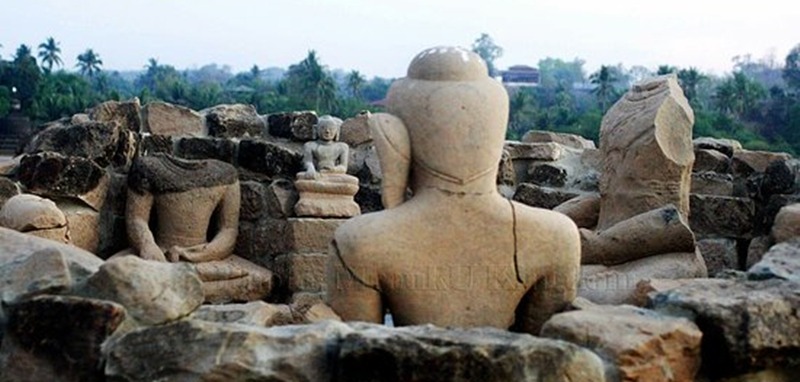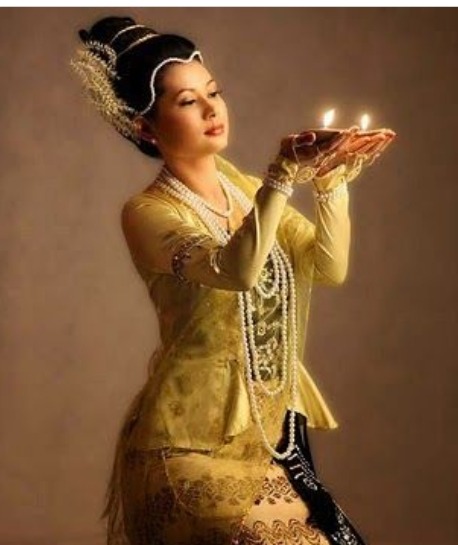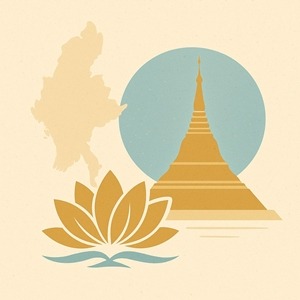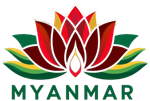
Rakhine State: People, History, and Culture (1,000+ Words)
Rakhine State, located along Myanmar’s western coast, is one of the country’s most culturally distinct and historically significant regions. Known for its ancient kingdoms, scenic coastline, diverse ethnic communities, and rich traditions, Rakhine offers a blend of heritage and natural beauty that makes it unique among Myanmar’s states. It borders Bangladesh to the northwest and the Bay of Bengal to the west, with mountain ranges separating it from the central plains of Myanmar. For centuries, Rakhine served as a crossroads of South Asian and Southeast Asian civilizations, influencing its people, architecture, language, and culture.
Geography and Environment
Rakhine stretches along a long coastal strip of more than 400 kilometers, featuring pristine beaches, islands, mangrove forests, and fertile valleys. The Rakhine Yoma mountain range runs parallel to the coast, creating a natural barrier from mainland Myanmar. These mountains contribute to the state’s distinct climate—humid, tropical, and heavily influenced by monsoon rains.
The region includes several important rivers, such as the Kaladan, Lemyo, and Mayu rivers, which have historically supported agriculture, transportation, and trade. The abundant coastline is rich in marine life, making fishing a central activity for many communities. Ngapali Beach, one of the most popular beach destinations in Myanmar, attracts visitors with its crystal-clear waters, soft white sand, and peaceful environment.
People and Ethnic Diversity
Rakhine State is home to a mosaic of ethnic groups, each contributing to the region’s cultural richness. The largest group is the Rakhine (Arakanese) people, who are ethnically related to the Bamar but possess their own language, script, and traditions. The Rakhine language, closely related to Burmese, contains unique pronunciations and vocabulary influenced by centuries of contact with Bengali and Pali cultures.
Other ethnic groups include the Kaman (recognized as one of Myanmar’s official ethnic groups), Mro, Thet, Daingnet, Khami, and Rohingya communities in northern Rakhine. This diversity has historically made Rakhine a place of cultural fusion, with influences from Buddhism, Islam, Hinduism, and local indigenous beliefs.
The Rakhine people are known for their hospitality, strong pride in their heritage, and deep connection to the sea. Many coastal communities specialize in fishing, salt-making, and boat-building, while inland areas focus on rice farming, betel nut cultivation, and handicrafts.
A Rich and Ancient History
Rakhine’s history spans more than 2,000 years, shaped by powerful kingdoms and extensive maritime trade.
The Ancient Kingdom of Dhanyawadi
One of the earliest known civilizations in the region was the Dhanyawadi Kingdom, believed to have flourished around the 1st century CE. Archaeologists have found massive city walls, reservoirs, religious artifacts, and inscriptions that reflect an advanced and organized society engaged in trade with India, Sri Lanka, and Southeast Asia.
The Mahamuni Buddha image—one of Myanmar’s most sacred relics—is said to have originated in Dhanyawadi before being moved to Mandalay in the 18th century.
The Mrauk-U Kingdom
The most famous chapter of Rakhine history begins with the rise of the Mrauk-U Kingdom in 1430. For more than 350 years, Mrauk-U served as a powerful trading center connecting Bengal, the Ottoman Empire, Sri Lanka, Thailand, and the rest of Southeast Asia.
The architecture of Mrauk-U reflects this cosmopolitan influence. Its stone temples and pagodas, such as Shittaung, Htukkanthein, and Koe Thaung, reveal both Buddhist and Hindu-inspired designs. Mrauk-U was once considered one of the richest ports in the region, and its kings issued coins jointly inscribed in Rakhine and Persian scripts.
Colonial Era and Modern Times
The Rakhine Kingdom fell to the Konbaung Dynasty in 1784, leading to mass migration and conflict. After the First Anglo-Burmese War in 1826, Britain annexed Rakhine along with the Tanintharyi Region. Under colonial rule, the population became more mixed due to increased migration across the region’s borders.
In modern Myanmar, Rakhine has remained politically sensitive, but it continues to preserve its cultural identity, historical heritage, and unique traditions.

Religion and Spiritual Life
Theravada Buddhism is the dominant religion among the Rakhine people, and monasteries play a central role in community life. Rakhine Buddhist practices share many similarities with the Bamar, but the region has distinct local traditions, rituals, and festivals.
The Buddhist calendar shapes daily life, with merit-making activities such as offering alms, building pagodas, and participating in religious festivals. Many communities also practice indigenous beliefs involving spirits (nats) and ancestral guardians.
In northern Rakhine, Muslim communities have long practiced their own religious traditions, contributing to the region’s multicultural identity.
Festivals and Cultural Celebrations
Rakhine State hosts several notable festivals that highlight its heritage:
Rakhine Thingyan (Water Festival)
Although celebrated nationwide, Rakhine Thingyan has unique traditional dances, songs, and boat ceremonies. Young people perform the Yein dance, wearing colorful costumes to celebrate the New Year.
Shitthaung Pagoda Festival
Held in Mrauk-U, this festival includes boat racing, traditional wrestling, music, and offerings to commemorate the ancient kings.
Sand Pagoda Festival
This coastal tradition involves building small pagodas with sand along the beach as a form of merit-making. Families gather to decorate the pagodas with flowers, candles, and flags.
Fishing Festivals
Some fishing villages hold seasonal festivals to bless the sea, boats, and fishermen for a safe and abundant harvest.
These festivals not only honor spiritual beliefs but also preserve the unique identity of Rakhine culture.
Traditional Cuisine
Rakhine cuisine is famous throughout Myanmar for its bold flavors, spicy dishes, and use of fresh seafood. Some signature foods include:
Rakhine Mont Ti (Arakanese rice noodle soup): A spicy, tangy dish made with fish broth, chili, lemongrass, and roasted rice powder. It is less oily than the Burmese version.
Fresh seafood: Grilled fish, prawns, crabs, and squid are staples in coastal areas.
Rakhine fish paste (ngapi): Made from fermented fish, it is an essential ingredient in daily meals.
Ambula (tamarind leaf salad): A refreshing dish often eaten with fish.
Coconut-based sweets: Rakhine desserts often feature coconut milk, palm sugar, and rice flour.
Food in Rakhine reflects the region’s close relationship with the sea and the natural resources of the land.
Arts, Craftsmanship, and Clothing
Rakhine artisans are skilled in woodcarving, weaving, and crafting lacquerware. Traditional Rakhine patterns feature waves, fish, and floral designs, inspired by the coastal environment.
The Rakhine longyi (htamein for women, pasoe for men) has distinctive patterns compared to the Bamar version, often with bold stripes and bright colors. Rakhine women commonly wear their hair in a high bun decorated with flowers, symbolizing elegance and cultural pride.
Traditional dances, including the Kyauk Paing dance and various folk performances, express themes of bravery, love, and the sea.
Tourism and Landmarks
Rakhine is home to some of Myanmar’s most iconic destinations:
Ngapali Beach
One of the most beautiful beaches in Southeast Asia, known for luxury resorts, peaceful fishing villages, and stunning sunsets.
Mrauk-U Archaeological Zone
Often compared to Bagan, Mrauk-U features over 700 temples and structures scattered across rolling hills. It is a must-visit destination for history enthusiasts.
Sittwe
The state capital, known for its cultural museums, seafood markets, and scenic views along the Kaladan River.
Ramree Island, Manaung Island, and Cheduba Island
These islands attract explorers with pristine beaches, coral reefs, and traditional communities.
Tourism remains underdeveloped in some areas, providing opportunities for eco-tourism and sustainable travel.
Conclusion
Rakhine State is a land of ancient kingdoms, diverse ethnic groups, and deep cultural traditions. Its people maintain a rich heritage shaped by the sea, the mountains, and centuries of international trade. From the historic temples of Mrauk-U to the sun-soaked shores of Ngapali Beach, Rakhine offers an extraordinary blend of history, natural beauty, and cultural identity.
Whether exploring its cuisine, festivals, or archaeological wonders, visitors and readers alike will find that Rakhine’s story continues to inspire pride and fascination.
Related posts:
 Mon State: People, History, and Culture of One of Myanmar’s Oldest Civilizations
Mon State: People, History, and Culture of One of Myanmar’s Oldest Civilizations
 Kayah State: People, Culture, Traditions, and Heritage of Myanmar’s Smallest State
Kayah State: People, Culture, Traditions, and Heritage of Myanmar’s Smallest State
 MRAUK U
MRAUK U
 Shan State: People, Culture, and Heritage of Myanmar’s Largest State
Shan State: People, Culture, and Heritage of Myanmar’s Largest State
 Chin State: People, Culture, History, and Traditions of Myanmar’s Mountain Region
Chin State: People, Culture, History, and Traditions of Myanmar’s Mountain Region
 Bamar People and Culture: History, Identity, and Traditions
Bamar People and Culture: History, Identity, and Traditions
